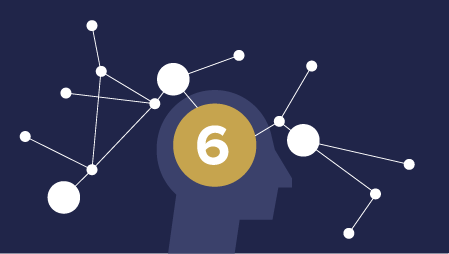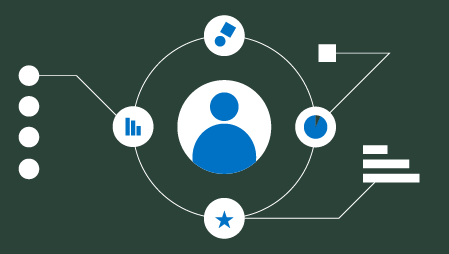Ready to learn Big Data? Browse Big Data Training and Certification Courses developed by industry thought leaders and Experfy in Harvard Innovation Lab.
Digital Transformation can mean a lot of different things to different people. But for everyone it means dealing with more data than ever before.
Industry 4.0, cloud, robotics, “big data,” artificial intelligence, machine learning, blockchain and similar technological advancements are changing the very nature of commerce across every business sector in every market. The one constant in all this disruption is data. To embark on a digital transformation journey that data needs to be mastered. Master data is the vital difference between scaling or failing in this time of business disruption and non-stop data.
All businesses tend to move on a similar path on their digital transformation journey from a legacy state of multiple silos, toward an integrated enterprise embracing relationship centricity then outward as a part of a connected ecosystem in a trust network.
Multiple Silos Create Disparate Data
When businesses strive to drive innovation and progress, they continue to grow in complexity that fosters fragmentation. The explosion of persona-based tech stacks (ERP, CRM, CDP, ABM, FinTech, MarTech, AdTech, etc.) may offer unprecedented insight, but inherent in each new app is yet another silo.
In each silo there is the potential to produce yet another version of the same data. Separate departments, regions, channels and go-to-markets naturally spawn separate data. These multiple systems and workflows create disparate data sources that lack internal standards. Vital relationship types like customer, vendor, partner and prospect often have differing definitions across different parts of the same organization.
Most enterprises are in some form of this legacy state. This does not mean they don’t have modern technology and infrastructure. This simply means that they have not taken the holistic steps necessary to put relationships at the center of their processes – both strategically and systematically.
Establishing Relationship Centricity
All business is based on relationships. Although many organizations think they are “customer-centric” their data can hardly support that notion. Ask yourself: do your systems know what your people know?
To create the innovative experiences that are at the core of digital transformation, enterprises must first embrace being relationship centric. Relationship centricity can be achieved by creating a horizontal view of your relationships across the entire enterprise built upon standard definitions.
A familiar approach involves the creation of a 360-degree view of customer, vendor, supplier or partner as well as product, brand and services. This idea of being centric about relationships across an integrated enterprise is only achieved by establishing and governing a common version of the truth about those relationships.
Engage in Trust Networks
A trust network is how you engage, how you interoperate, and how you seamlessly communicate with partners across your value chains. This can manifest itself in channel partner platforms, e-commerce customer self-service, supplier on-boarding systems and programmatic marketing to name just a few. Using the same foundational data and standard definitions, or links to the same foundational data and standard definitions, across verticals and markets provides the basis for seamless integration. Leveraging common data and syndicated processes between external parties allows the interoperability in a trust network to scale.
Ecosystems can only reach their full potential if they are built on accuracy and trust. In many cases our business dealings based personal feelings and good faith can sour if the data supporting that relationship is inaccurate, outdated and unstructured.
When users can trust their data, they can spend their time on improving the relationship experience rather than questioning their analytics. Your organization can move from silos to being centric and then an active part of a network.
The Solution Is Master Data
Since digital transformation runs on data, properly managing the diverse types and profuse quantities of that data will directly impact an organization’s ability to succeed and survive. Properly governed, Master Data becomes the source of common business truth used between internal systems, applications, and processes as well as externally between enterprises.
Structured data helps other data integrate and processes interoperate. Both of those together help you scale. Structured data improves all types of reporting and analysis. Structured data works harder than unstructured data.
There are very few business leaders who understand the value or even recognize the existence of Master Data and the critical importance of enterprise data governance, but all feel its effects. Concepts like “cleansing” and “freshness” and other data hygiene use cases are important, but they are hardly holistic. Most data hygiene exercises are ad-hoc campaign-based projects isolated to a siloed use case.
A real master data strategy, however, goes well beyond the legacy lexicon in the enterprise data management space. There are broader, more fundamental political and cultural business changes needed if an organization wishes to fulfill the vision of true digital transformation. In many cases, the entire nature of how data is created, managed, curated, integrated, and aggregated must change to drive interoperability.
Those who are able to harness these advancements, at scale, will flourish. Their success will spawn disruptive innovation, new levels of customer experience, and unprecedented business value. Those who cannot harness these new ideas, could find themselves stuck in a legacy quagmire of inefficiency and abrupt market irrelevance that will ultimately lead to their demise. As data professionals, you are in a uniquely valuable position to help your enterprise succeed. This is your opportunity to either seize or squander.




